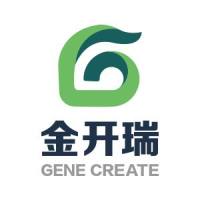Plant Protein Isolation
互联网
A. Method for ~1g or more of tissue.
1. Label all tubes. Prepare solutions and have ready at hand.
2. Remove the tissue from the �80oC freezer and thaw on ice. If the tissue is fresh, keep on ice (or alternatively work in a cold room).
3. Place tissue in a mortar and pestle.
4. Add ~ 2ml of QB per ~1g tissue.
5. Grind tissue until no more chunks are visible.
6. Remove ~1ml of the liquid grindate into a microfuge tube.
7. Place on ice.
8. Rinse mortar and pestle (and any other paraphernalia that came into contact with the sample) to remove all traces of sample and proceed to the protein isolation of the next tissue sample.
9. Spin samples at top speed in the microfuge (4oC for 15+ minutes).
10. Transfer the liquid supernatant into a second (new) microfuge tube.
11. Sometimes excess tissue is transferred over into the second microfuge tube. If this is the case, spin a second time for about 10 minutes and transfer this supernatant into a third microfuge tube.
12. Store samples in the �80oC.
B. Alternative method for small (<1g) quantities of tissue.
1. Working in the fume hood, prepare a pestle by flaming the end of a blue pipette tip and sealing the end by gently smashing it into a microfuge tube. Prepare as many pestles as tissue samples to be isolated.
2. Using the newly created pestle, grind the tissue directly in a microfuge tube.
3. Add ~1ml of QB to the ground tissue, mix and transfer the supernatant to a second microfuge tube.
4. Follow the procedure in A above the rest of the way.
C. Solutions and stuff
A. Solutions
1. QB
| Stock For 100ml | Final [] | |
| 2M KPO4 (pH 7.8) | 5ml | 100mM |
| 0.5M EDTA | 200μL |
1mM |
| Triton X-100 | 1ml | 1% |
| 80% Glycerol | 12.5ml | 10% |
| dH2O | 81.1ml |
Store RT
DTT (1.0M) 100μL 1mM
(Alternatively directly add 15.4mg DTT per 100ml)
Add DTT immediately before using. Store QB w/DTT at �20oC.
2. 2M KPO4 (pH 7.8)
| Stock For 200ml | Final [] | |
| K2HPO4 | 63.2g | |
| KH2PO4 | 5.0g | |
| pH should be | ~7.8 | |
| If not, adjust pH to 7.8 | ||
| F, a/c |
3. 0.5M EDTA (pH 8.0)
f, a/c.
Store RT.
Note: EDTA will not completely go into solution until the pH approaches 8.0 and the H2O is almost at final volume. Essentially, the pH needs to be continuously adjusted as the EDTA dissolves.
Stockinger Lab; Version 09/10/01
4. 10N NaOH
VI. References
Bradford, M.M. (1976) A dye binding assay for protein. Anal. Biochem. 72:248-254.
QB: Ni, M., Dehesh, K., Tepperman, J.M., and Quail, P.H. (1996) GT-2: In vivo transcriptional activation activity and definition of novel twin DNA binding domains with reciprocal target sequence selectivity. Plant Cell 8:1041-1059.









